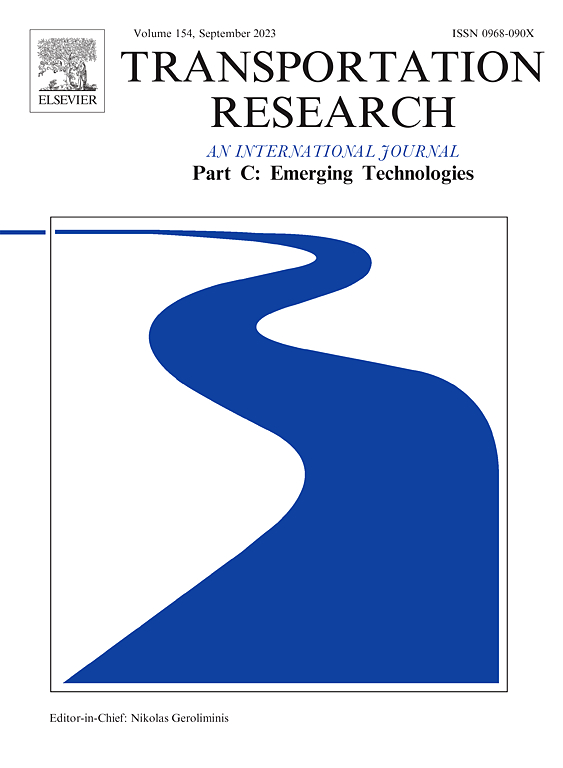Cost-competitiveness analysis of mobile chargers in an electric vehicle parking and charging system
IF 7.6
1区 工程技术
Q1 TRANSPORTATION SCIENCE & TECHNOLOGY
Transportation Research Part C-Emerging Technologies
Pub Date : 2025-02-01
DOI:10.1016/j.trc.2024.104951
引用次数: 0
Abstract
Currently, mobile chargers (MCs) are gaining popularity owing to their flexibility and the potential to solve the widespread issue of chargers being occupied after the charging process has finished, due to delayed departures of electric vehicles (EVs). In this study, we investigate the adoption of MCs in the EV parking and charging system (EVPCS) and demonstrate its cost-competitiveness through comparison with fixed chargers (FCs). First, we propose a modified M/M/n/K queueing model with two-phase services to capture the EVs’ dwell-after-charging behavior. Then we present the steady-state analysis with a matrix analytical method to analyze the properties of the proposed models. To evaluate and compare the performances of these two types of charging facilities, several key measures like blocking probability, average queue length and delay, and chargers’ utilization rate are derived, and extensive experiments exploring diverse scenarios are obtained. Numerical results uncover that: (1) the EVPCS configuration and EVs’ arrival and service rates have distinct impacts on the performance metrics of different types of chargers; (2) the MC may lose its competitiveness if the EV arrival rate is relatively low along with a high charging service rate or when the charger proportion approaches 1 in a small-sized EVPCS; only when the system is overloaded would the MC have a higher level of service than the FC; (3) in terms of cost efficiency, MCs demonstrate better competitiveness than the low-powered FCs considering the equivalent service with higher consumer surplus, while competing with moderately to high-powered FCs, MCs have little superiority; MCs are more profitable to the operator when competing with either low or high-powered FCs, but not for moderately-powered FCs; yet, the MC’s charging powers is required to be at an acceptably moderate level to demonstrate its cost-competitiveness. Furthermore, analytical formulas have been developed to approximate the two-phase queueing model under certain scenarios, and their accuracy has been compared with the customized two-phase queueing model.
求助全文
约1分钟内获得全文
求助全文
来源期刊
CiteScore
15.80
自引率
12.00%
发文量
332
审稿时长
64 days
期刊介绍:
Transportation Research: Part C (TR_C) is dedicated to showcasing high-quality, scholarly research that delves into the development, applications, and implications of transportation systems and emerging technologies. Our focus lies not solely on individual technologies, but rather on their broader implications for the planning, design, operation, control, maintenance, and rehabilitation of transportation systems, services, and components. In essence, the intellectual core of the journal revolves around the transportation aspect rather than the technology itself. We actively encourage the integration of quantitative methods from diverse fields such as operations research, control systems, complex networks, computer science, and artificial intelligence. Join us in exploring the intersection of transportation systems and emerging technologies to drive innovation and progress in the field.

 求助内容:
求助内容: 应助结果提醒方式:
应助结果提醒方式:


